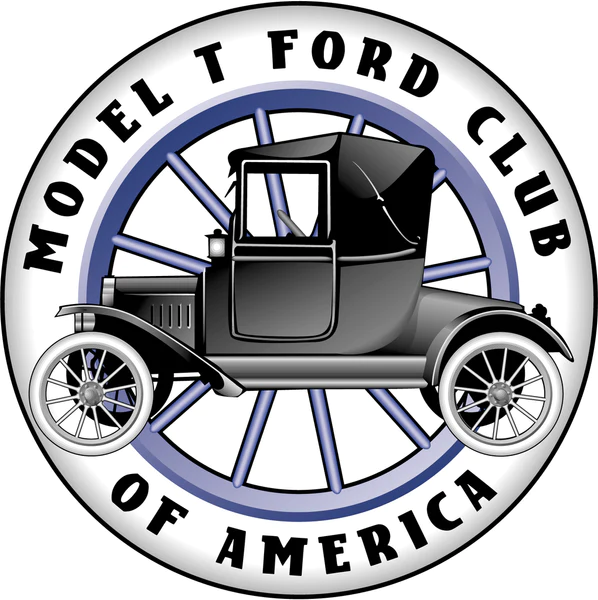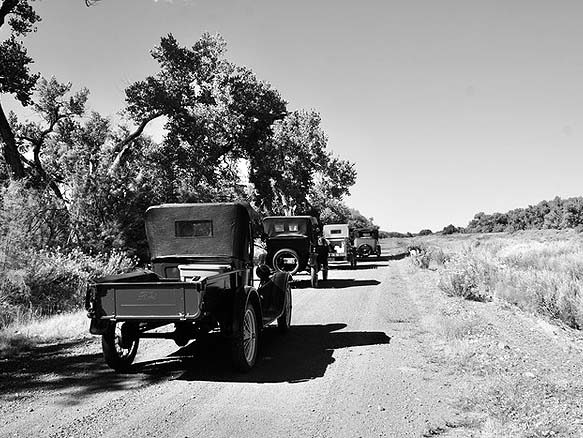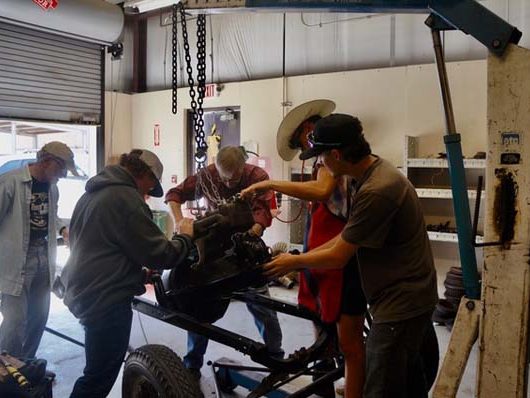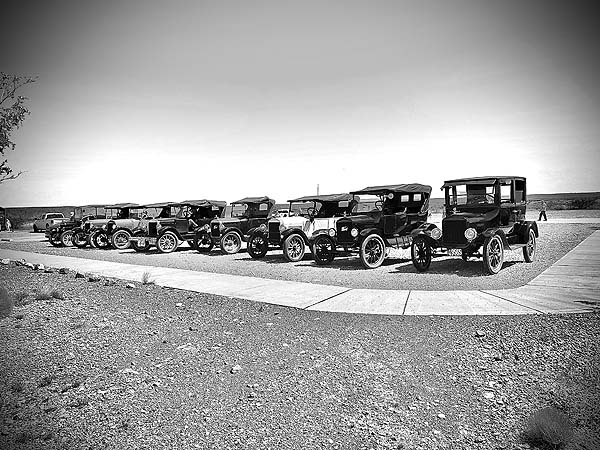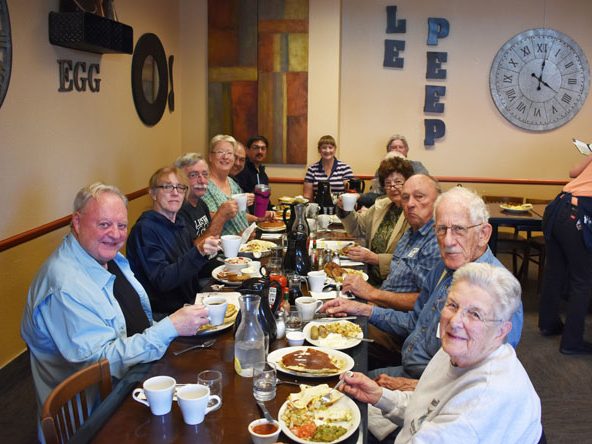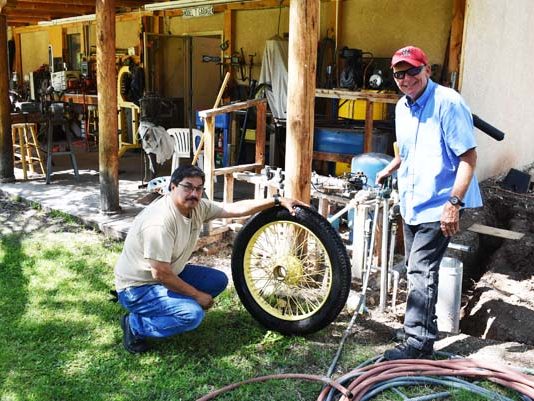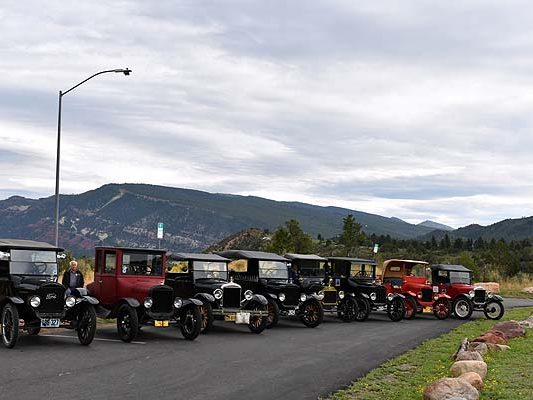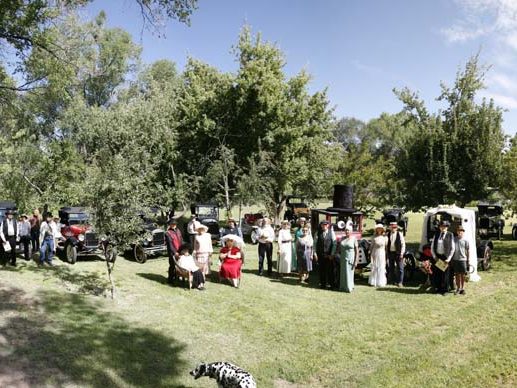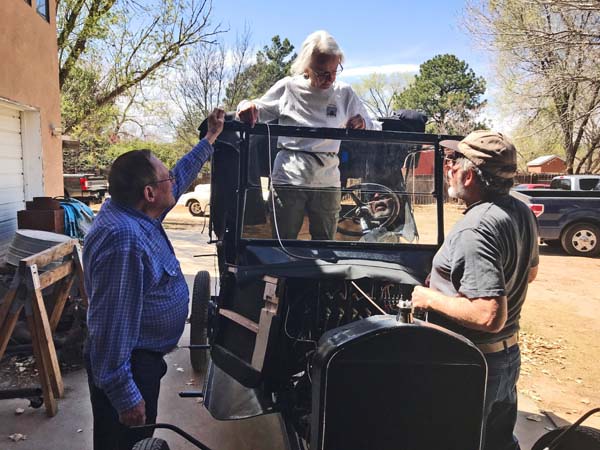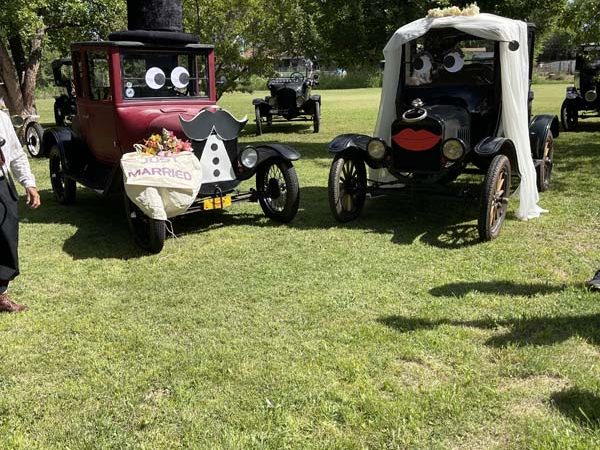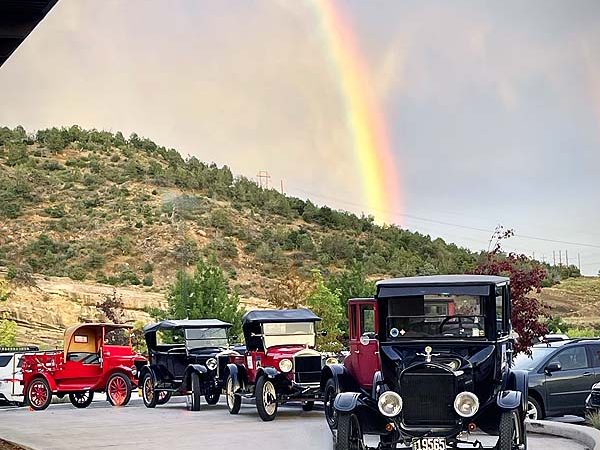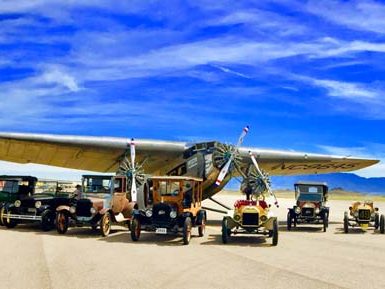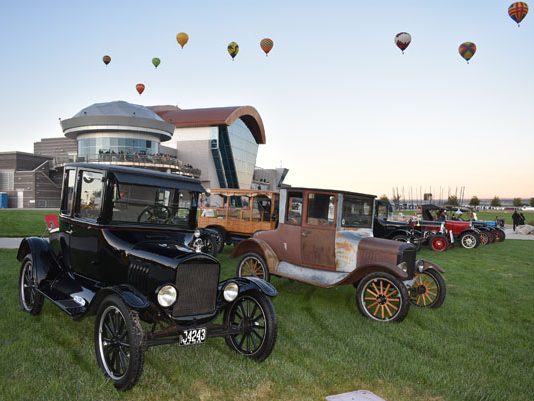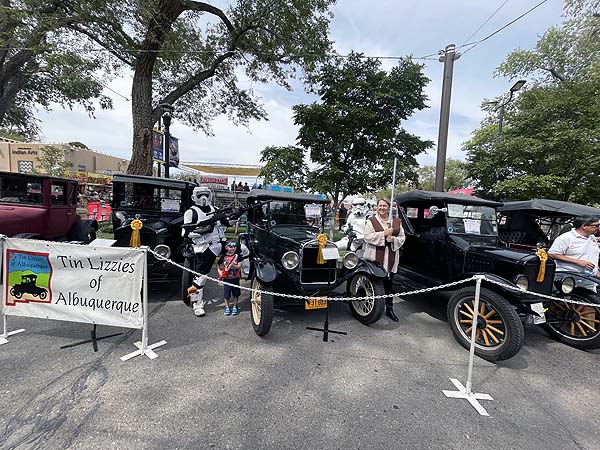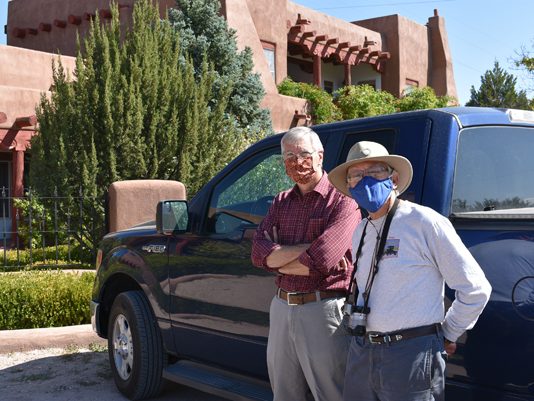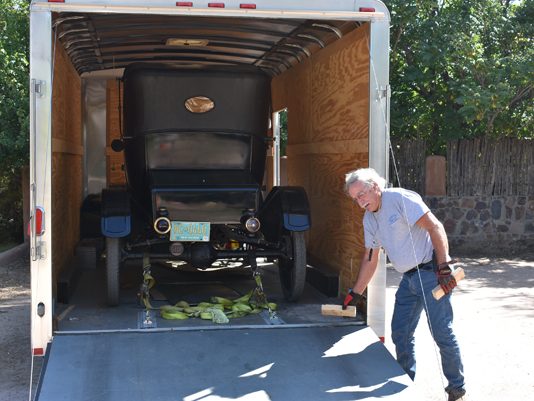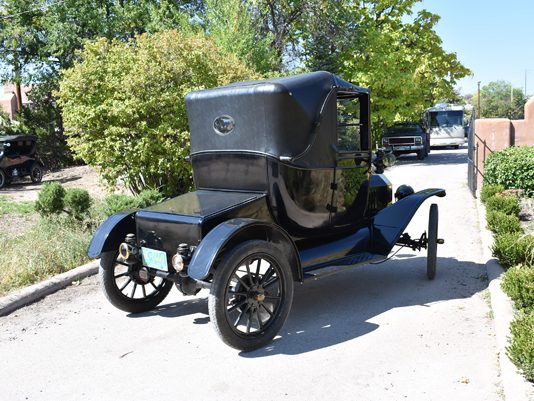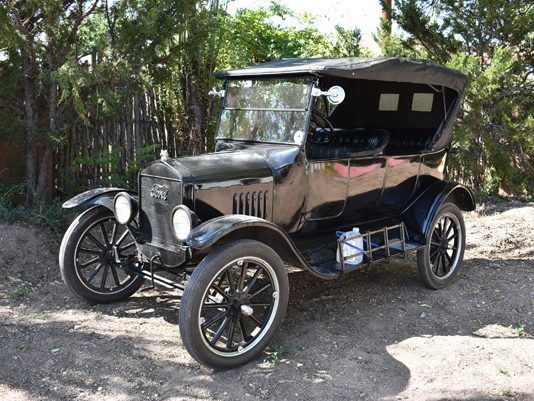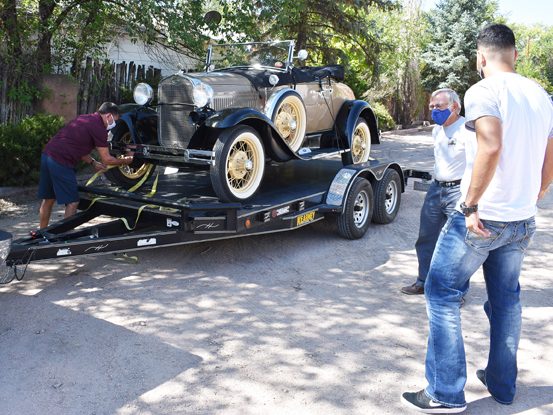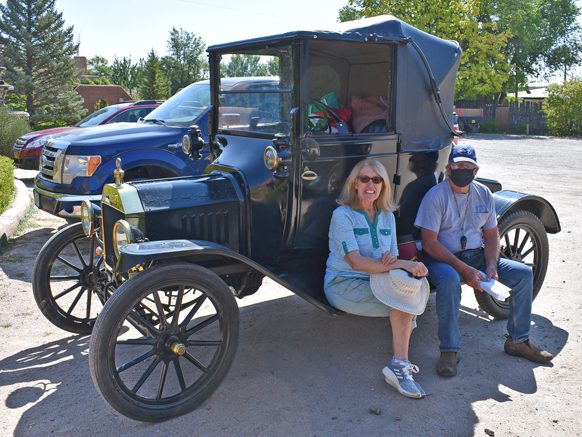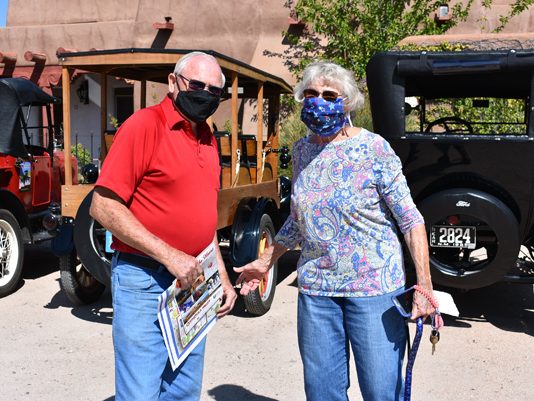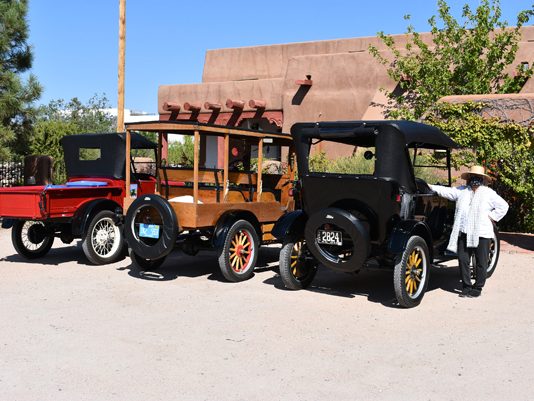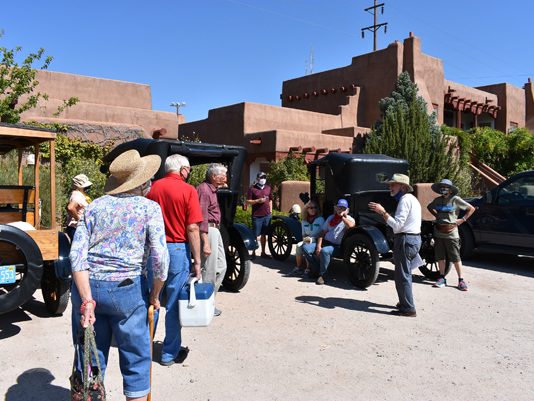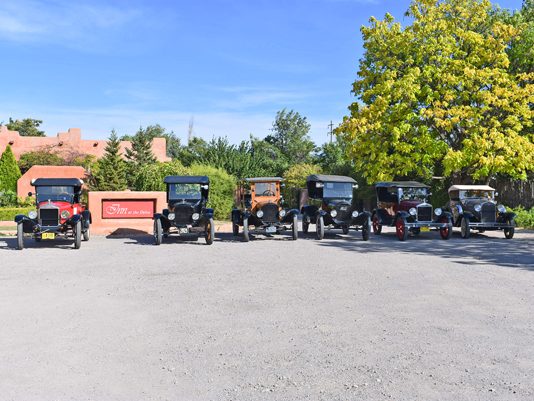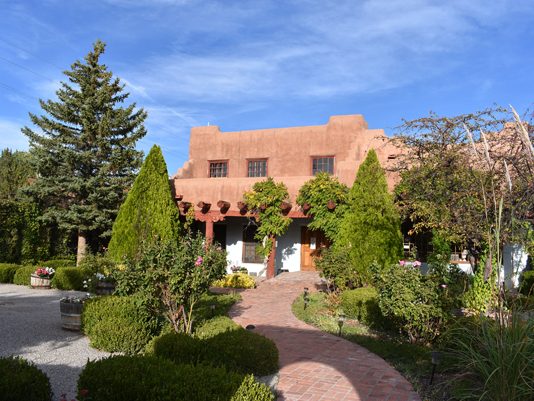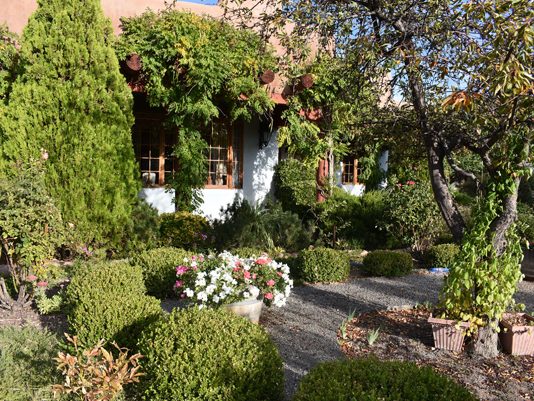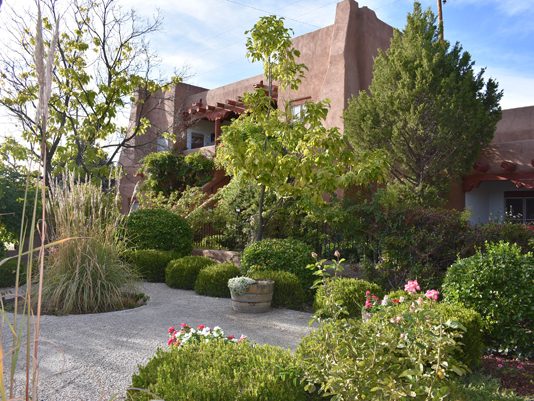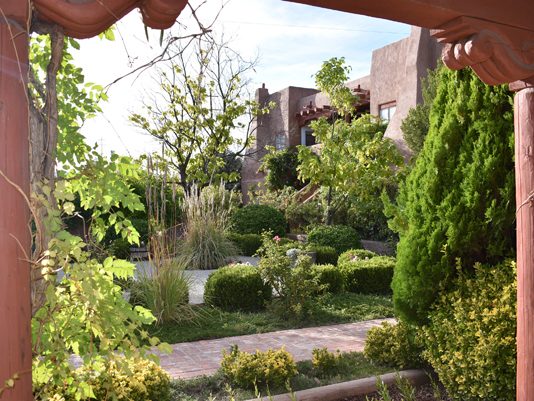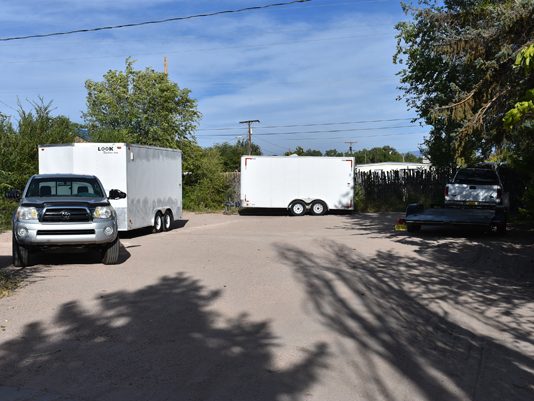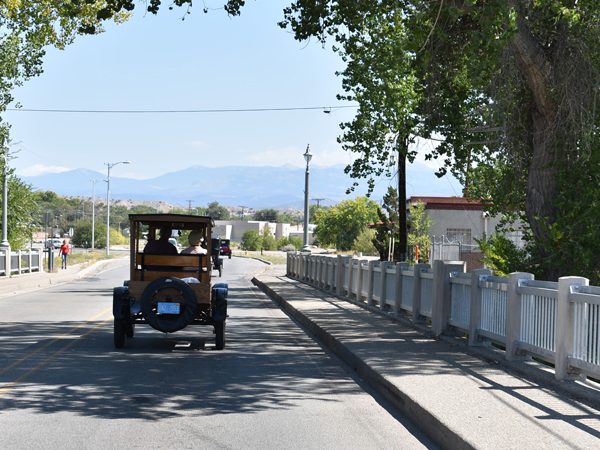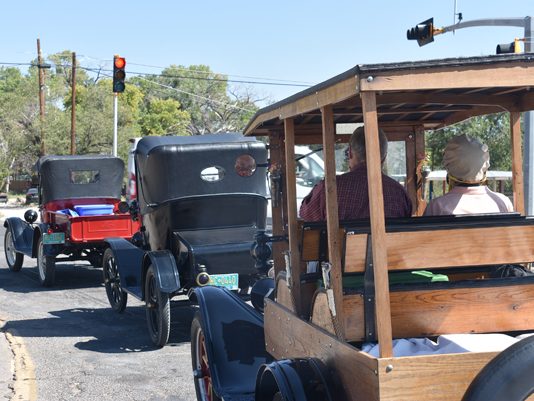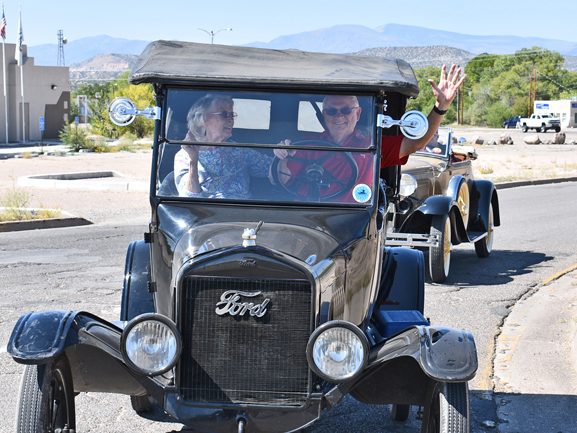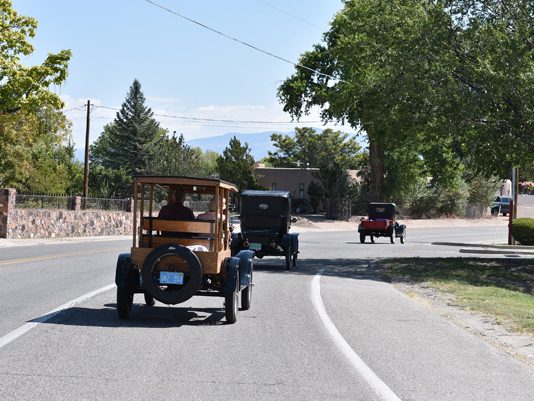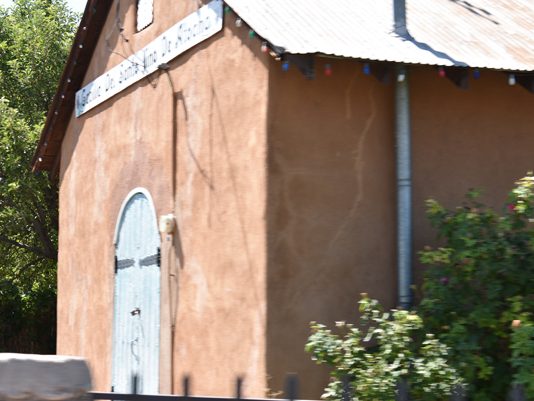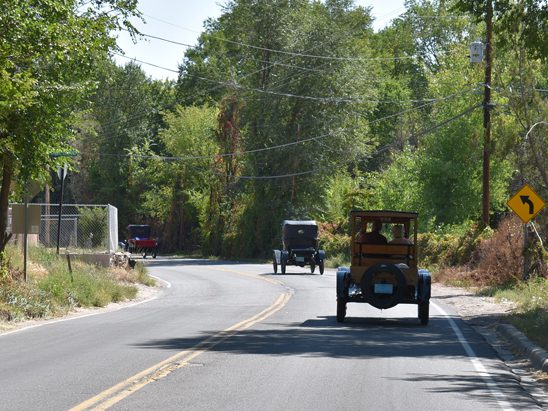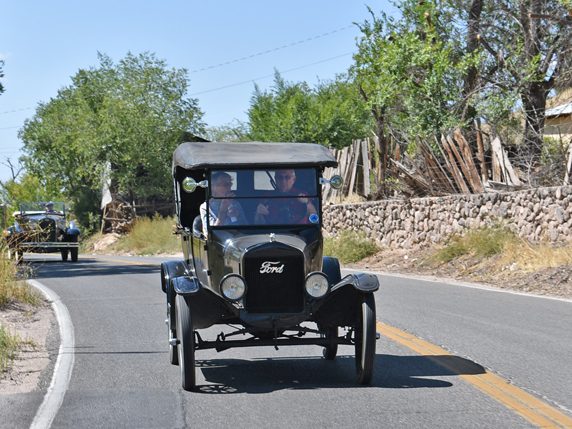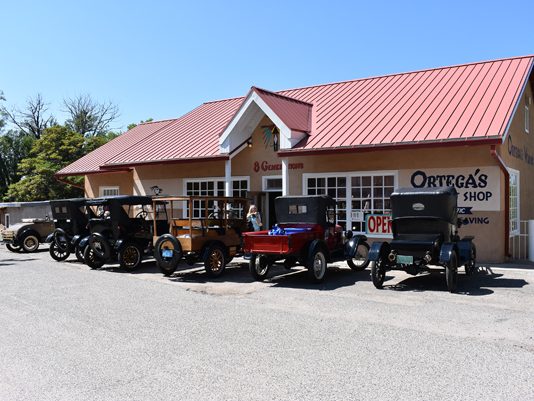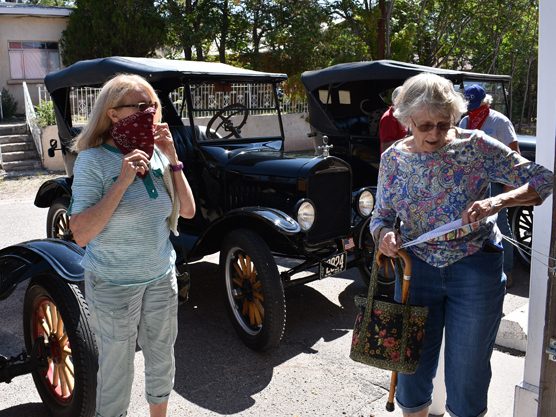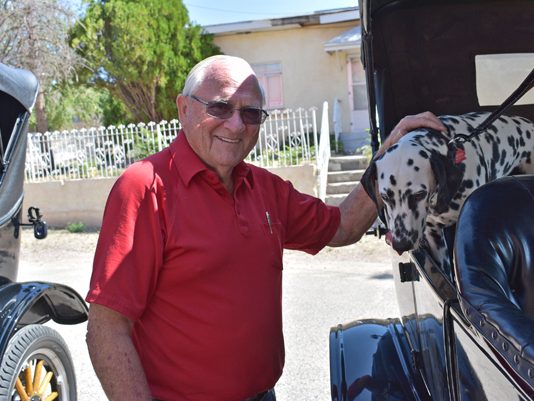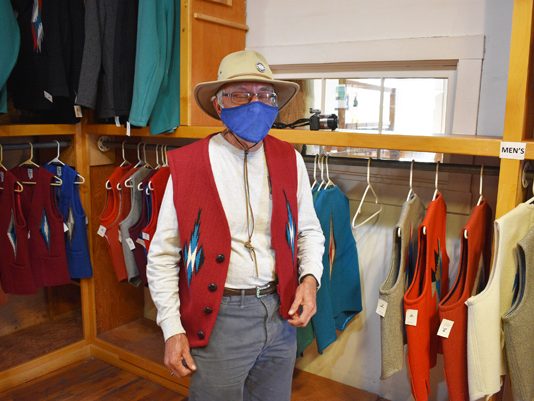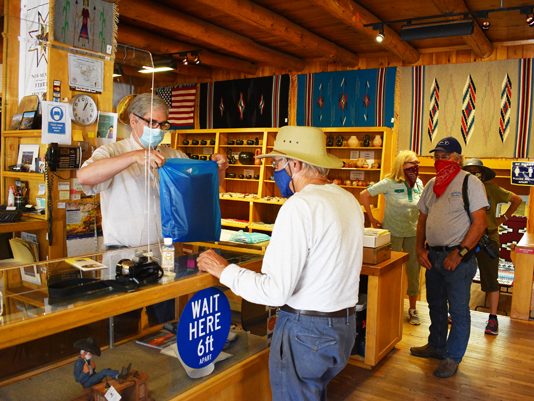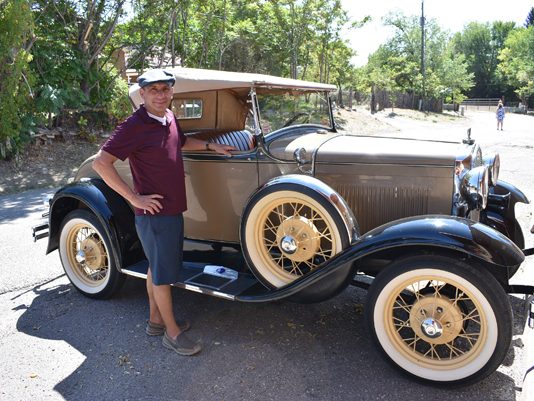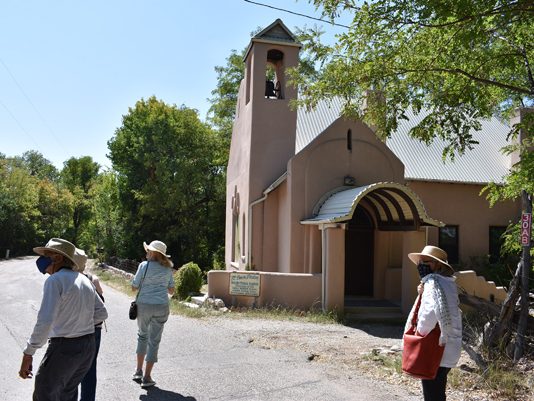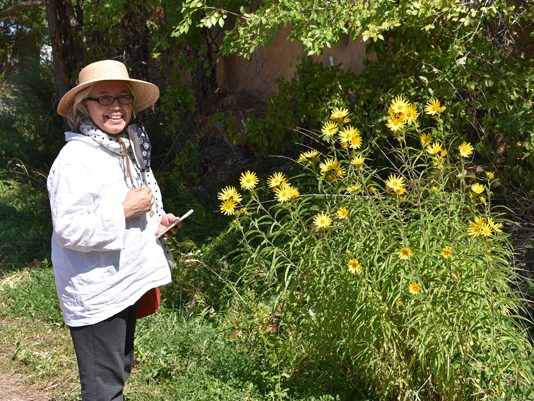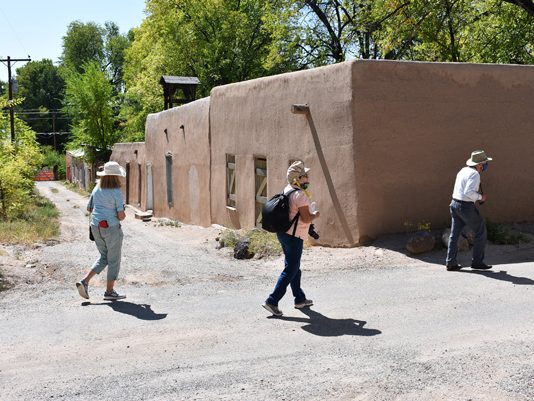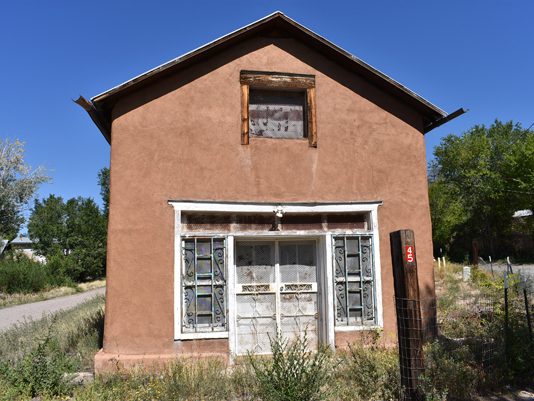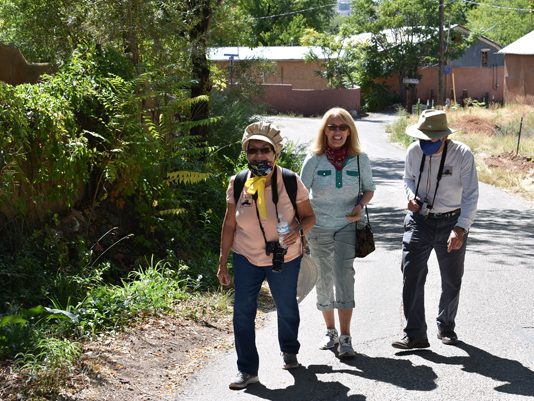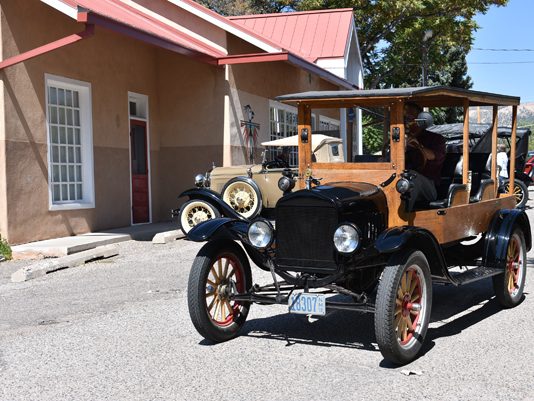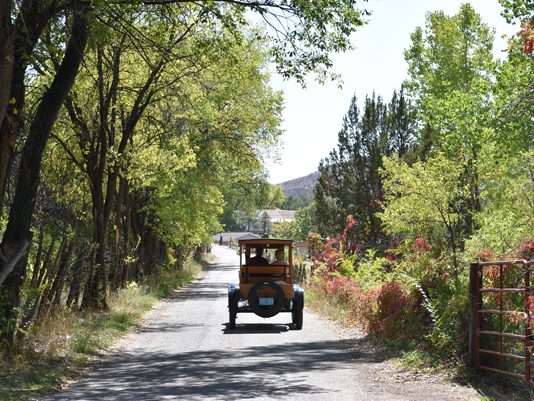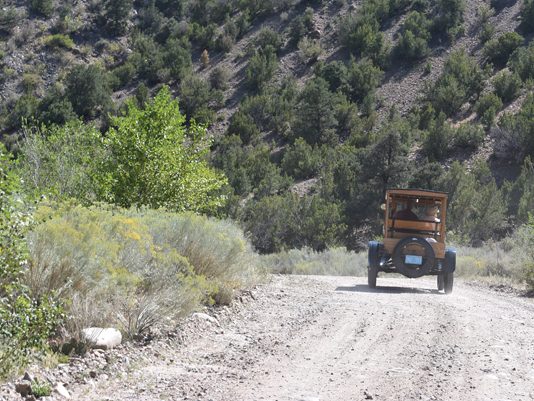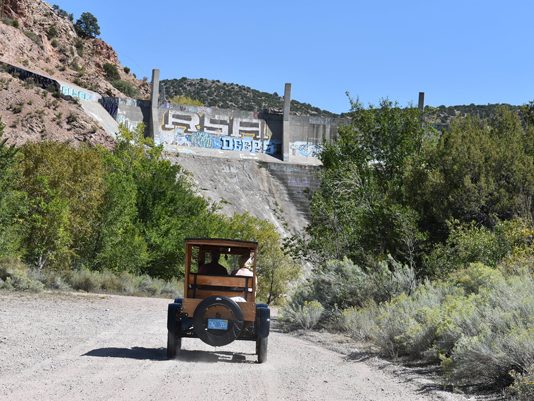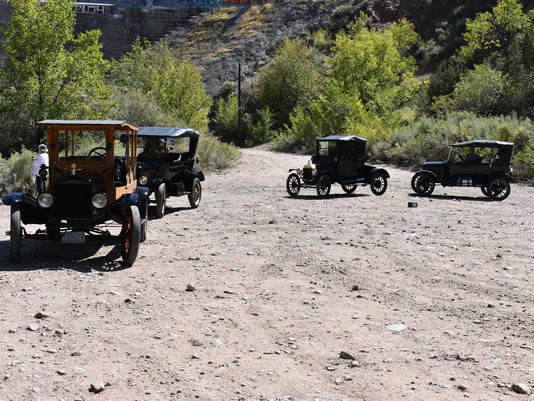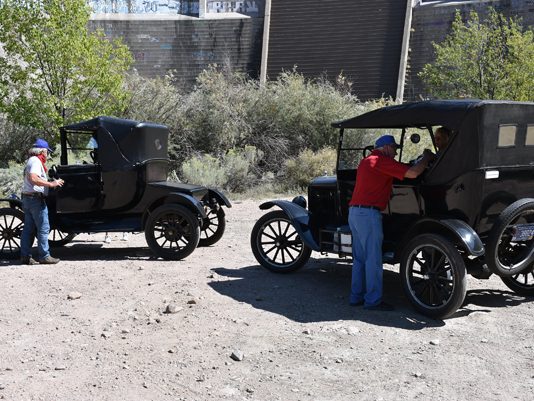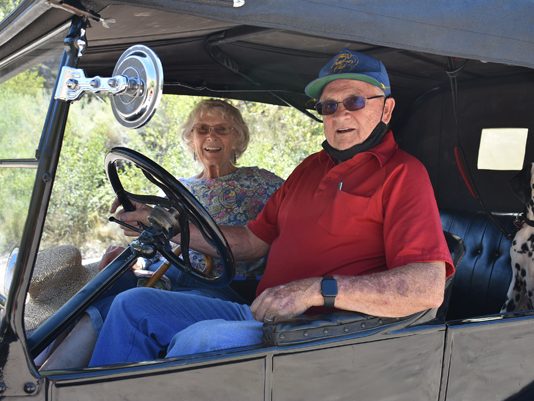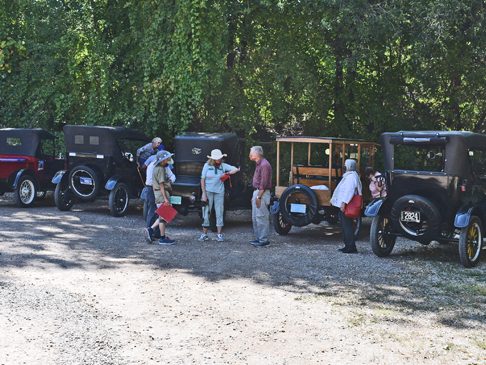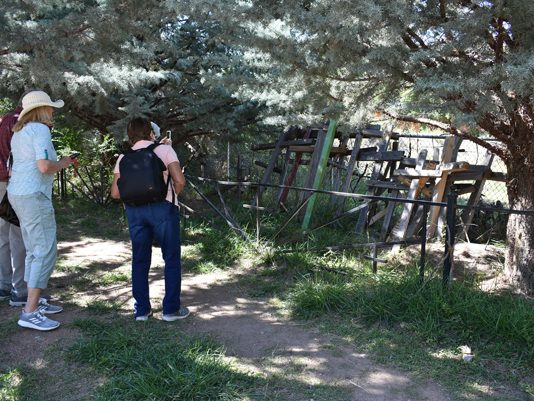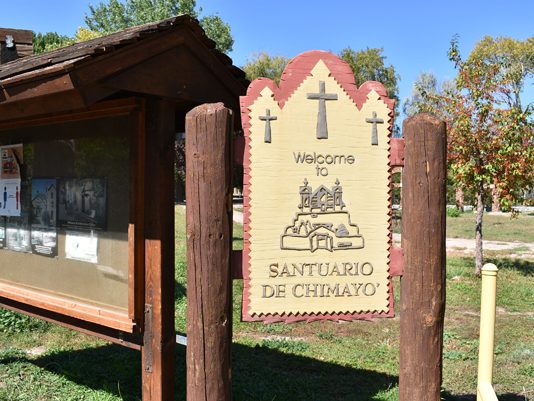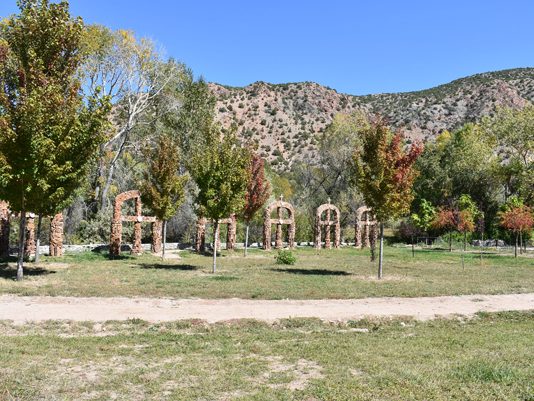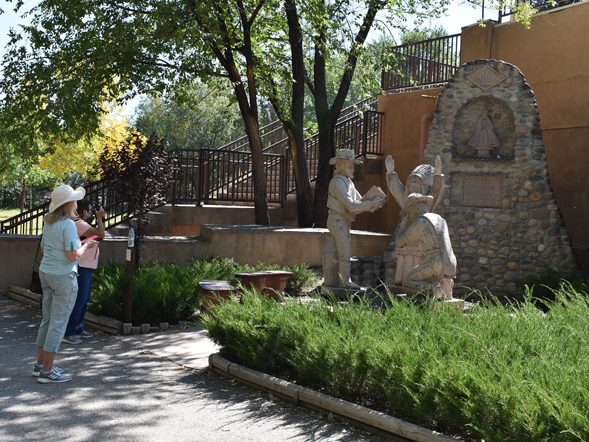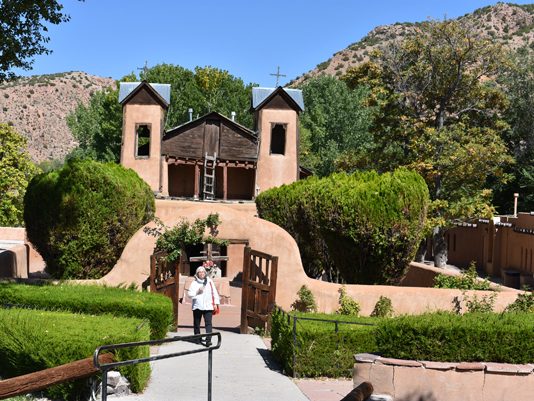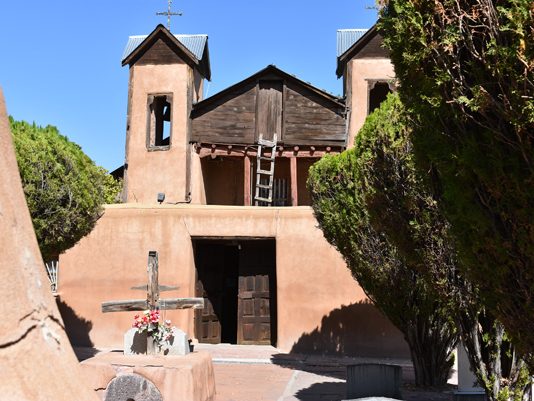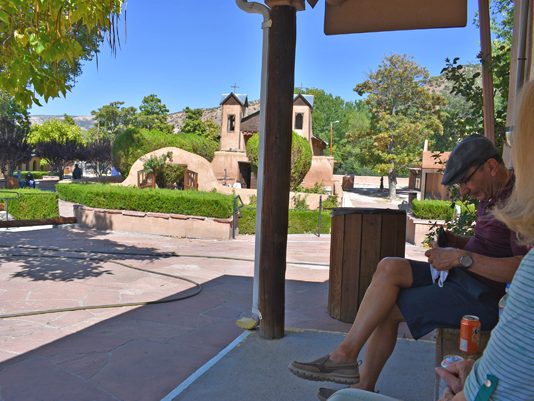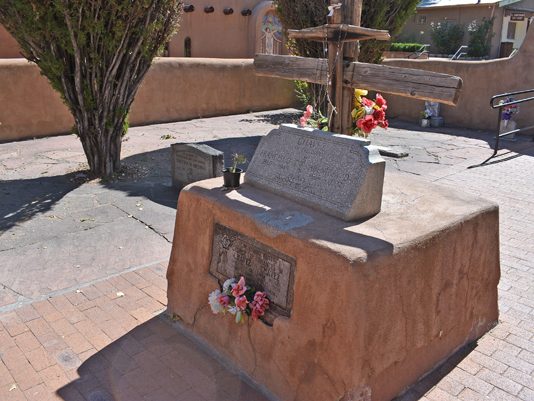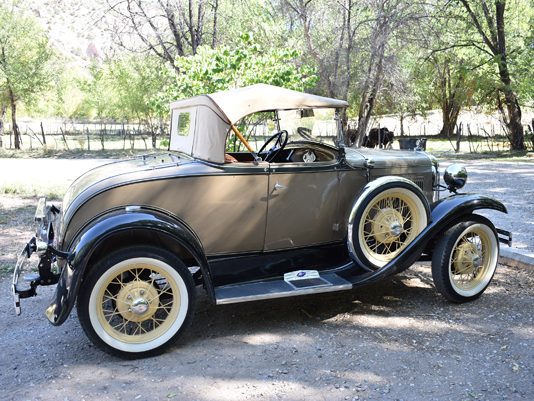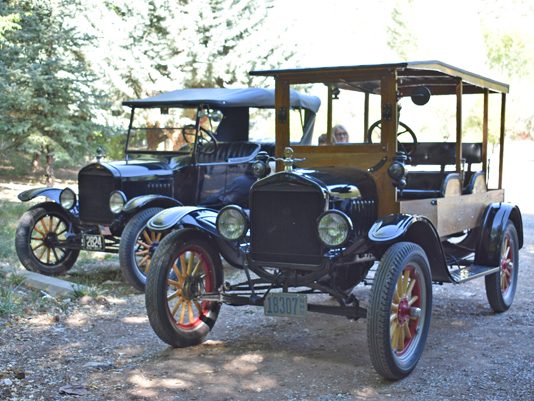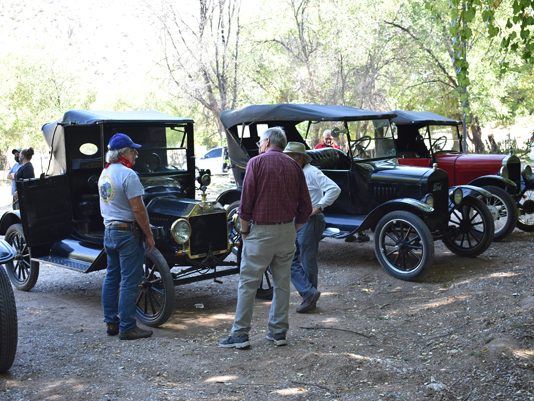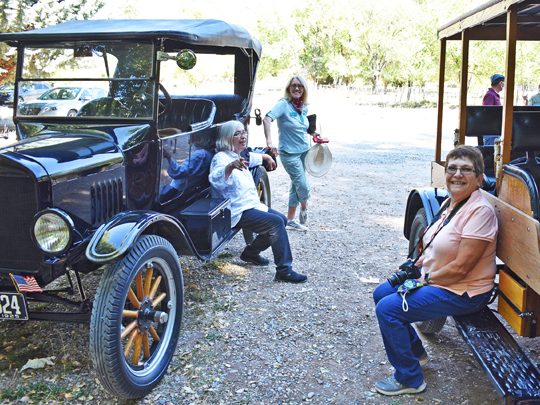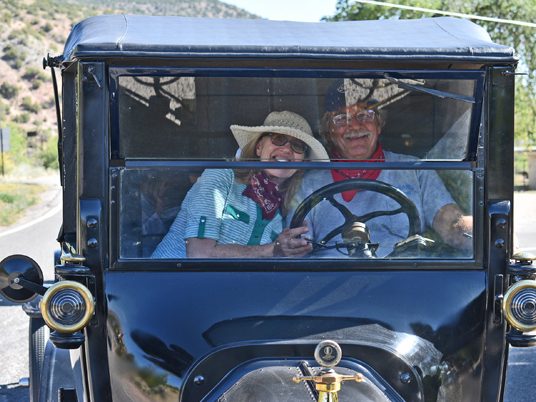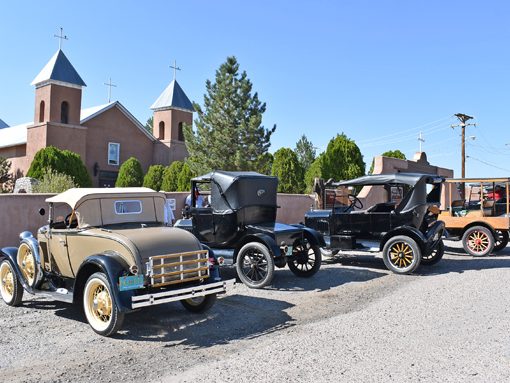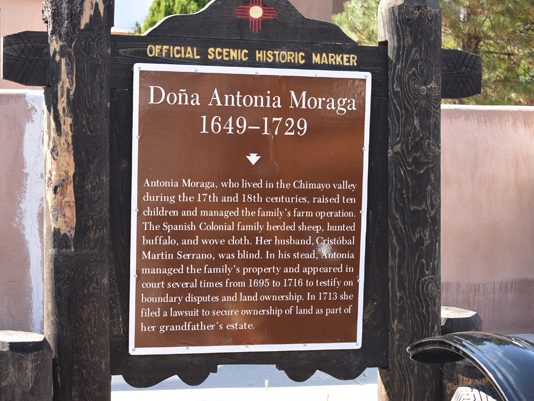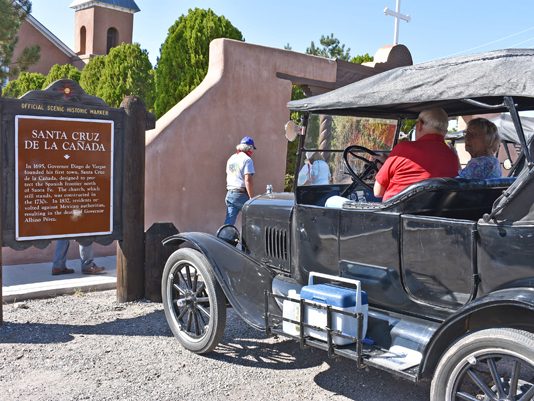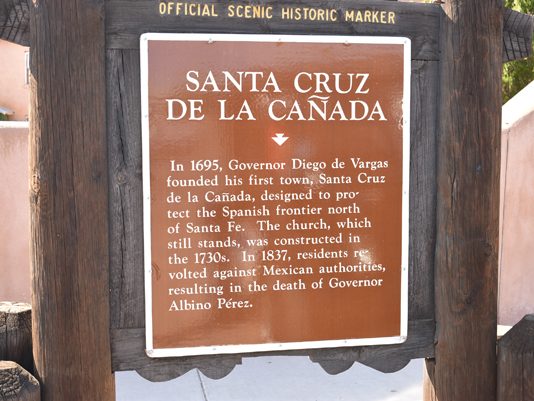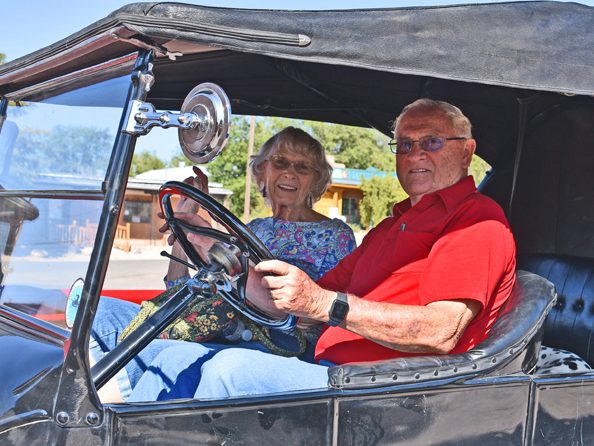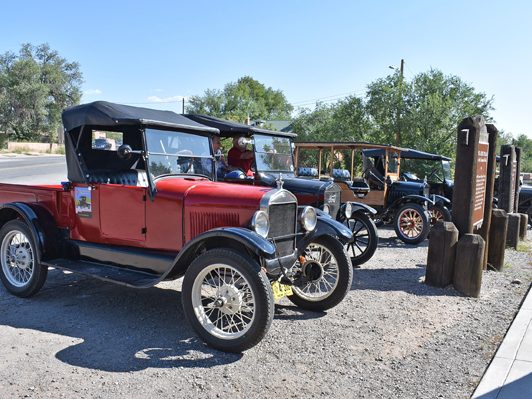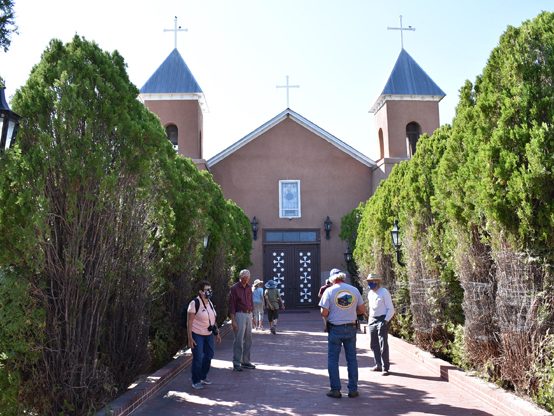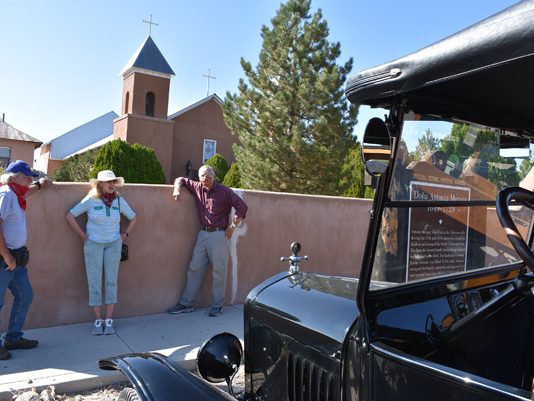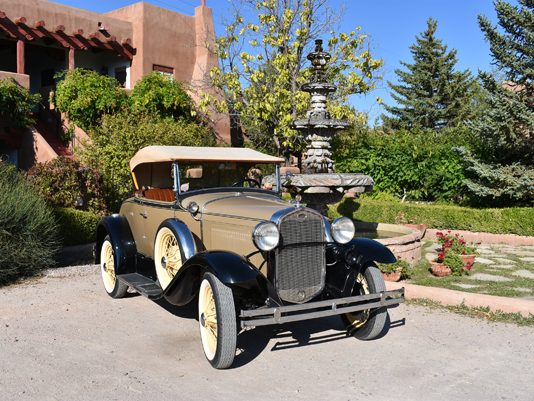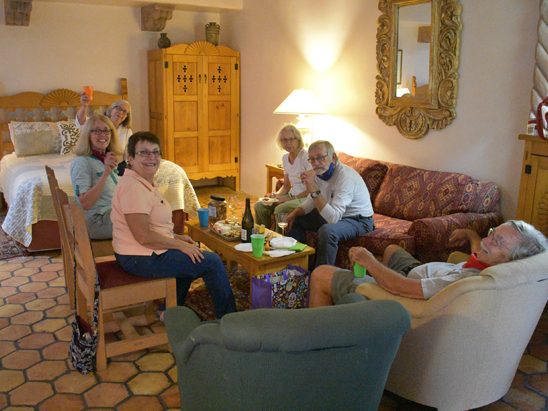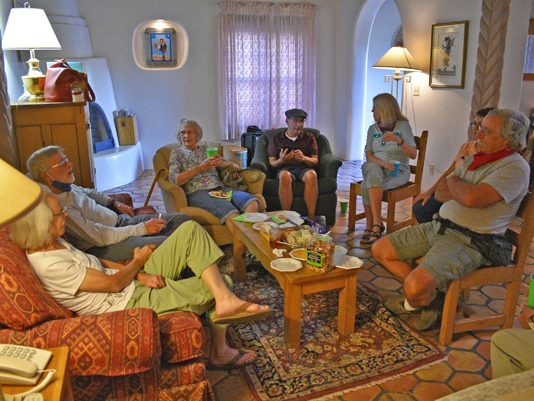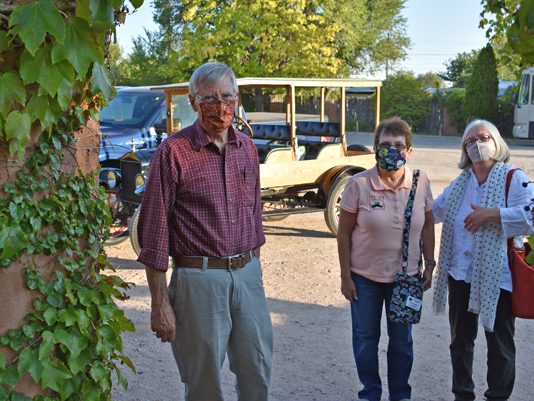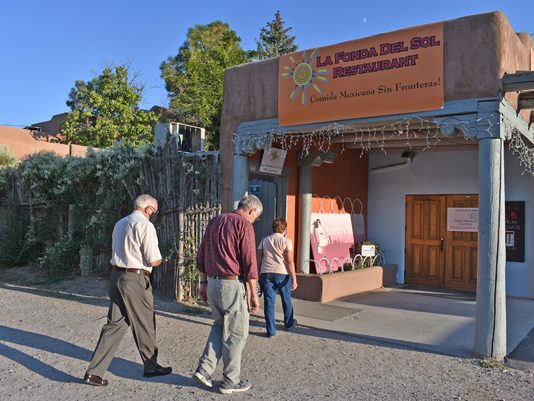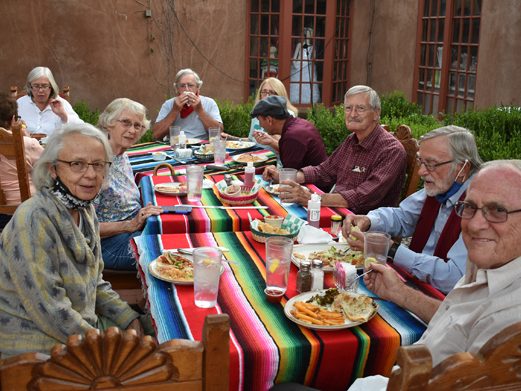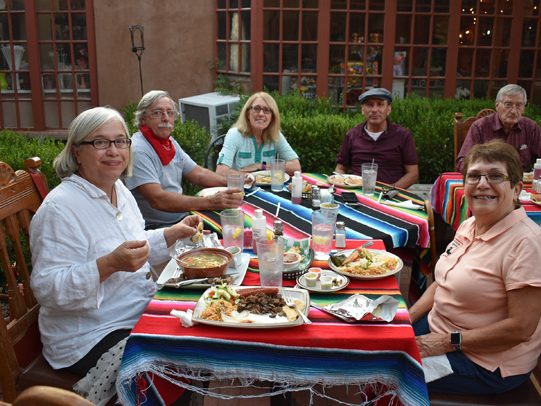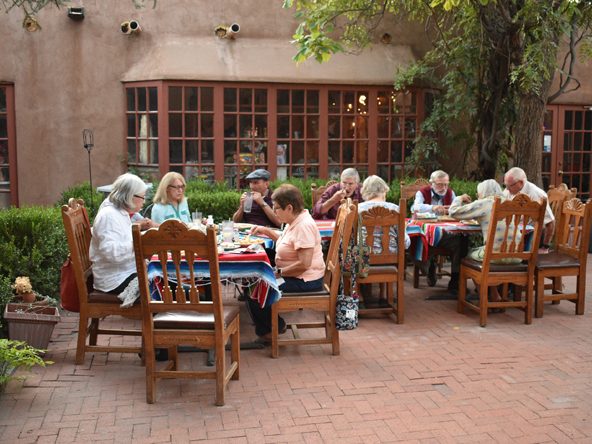Story by Paul and Marilyn Duncan, edited by Mark Wing, photos by Mark and Susan Wing
Link to Espanola Valley Tour Day 2 (Sept. 25, 2020)
Link to Espanola Valley Tour Day 3 (Sept. 26, 2020)
The Tin Lizzies of Albuquerque annual tour for 2020 was scheduled to be in Socorro, NM (approx. 1 hour south of Albuquerque), but this tour was postponed to 2021 due to COVID-19 concerns. The idea of a smaller tour to Espanola (approx. 90 miles north of Albuquerque) was organized very quickly by Paul and Marilyn Duncan, and assisted by Orlando Ortega and Dave Ferro. The participants included 13 club members, 6 Model T’s, and 1 Model A. The emphasis of this tour was to explore the unique history of north central New Mexico in Rio Arriba County, but at the same time stay flexible and observe COVID-safe rules. Many of the locations, such as some museums, that we would visit under normal circumstances, were still closed to the public. In spite of this, there were still a lot of places to see and visit safely in the Espanola area. Our driving included 3 days: a half-day drive to Chimayo, a long day drive on the El Rito Loop, and a final half-day driving the back roads near Ohkay Owingeh Pueblo to the Luceros Historic site near Alcalde.
Our tour hub was the Inn at the Delta off of US 84/Hwy 285. This bed and breakfast is owned by Dr. Anthony Garcia (a dentist) and is run by his family. The grounds were beautiful, the buildings architecturally interesting, the rooms were very spacious, and the staff were very friendly and welcoming! There was also ample and secure parking for our vehicles and trailers.
Inn at the Delta
243 N. Paseo de Onate, Espanola, NM 87532
Española: The current city of Española is situated mainly in Rio Arriba County. The current population is around 11,000. In 1880 the Denver and Rio Grande Western Railroad (D&RGW) Chile line arrived and the town site was named Española (española (plural españolas) is the female equivalent of español, a female Spaniard). The town name was officially adopted in 1900. What is now referred to as the “Espanola Valley” or “San Juan Valley” encompasses many smaller and older communities that were originally settled by the Spanish along the rivers named Rio Santa Cruz, Rio Grande, and Rio Chama. In 1598, Spanish conquistador Don Juan de Oñate arrived in the area with his large entourage and established the first European capital of New Mexico at the confluence of the Rio Grande and Chama Rivers near Ohkay Owingeh-San Gabriel Pueblo. The early Spanish settlers were mainly farmers and their descendants continue agricultural traditions in the area along the rivers. The railroad closed down in the early 1940s. Many Española residents found employment at the nearby Los Alamos National Laboratory starting with the Manhattan project and continuing until the present time.
Thursday Afternoon 09/24/20: Espanola, Chimayo & Santa Cruz:
Chimayó and Santa Cruz Lake Dam: This community lies on the High Road to Taos. The Santa Cruz River provides a water supply to 30 acequias that deliver water to 5,000 irrigated acres along the river. The source of the water is the Santa Cruz Lake that is currently on BLM Land. A dam that was built in the 1920s and is still operating with the original Model T-era electrical system to control the dam release, etc. A modern electrical upgrade is currently being installed.
In the village of Chimayó, the Ortega Weaving Shop has been operating since 1900 and still remains a family-owned business.
Chimayo is probably best known for the El Santuario de Chimayó, the “Little Lourdes” because of it’s miraculous “healing” dirt. The shrine is a National Historic Landmark and visited by 300,000 visitors per year! The original adobe chapel was built in 1810 by Don Bernardo Abeyta, a local member of the penitentes. Pilgrims began arriving after cures were reported and within only a short time, the original chapel was replaced by the current church. Crutches and other memorials left by visitors line the walls. Visitors to the church may take a small amount of the “holy dirt” from the pocito. Nearby is also the Santo Niño de Atocha chapel that was built in 1856 by the Medina family. The chapel houses a small statue of the Santo Niño holding a water gourd and a basket of bread. The El Potero Trading Post sells a variety of New Mexican foods and religious articles.
Santa Cruz: This village is situated within the city limits of Espanola and is located in the the Valley of the Santa Cruz River. When Don Diego De Vargas returned to the area after the Pueblo Revolt, he established a Hispanic community called Santa Cruz de la Cañada. The area contained many orchards irrigated by the Santa Cruz River. The original Santa Cruz Catholic Church was constructed around 1740. This church is the largest and best example of a mission church in New Mexico. Artwork in the church was contributed by local santeros. The current church remains active and is currently celebrating mass while many other churches in the area have been closed due to COVID.
